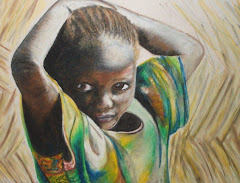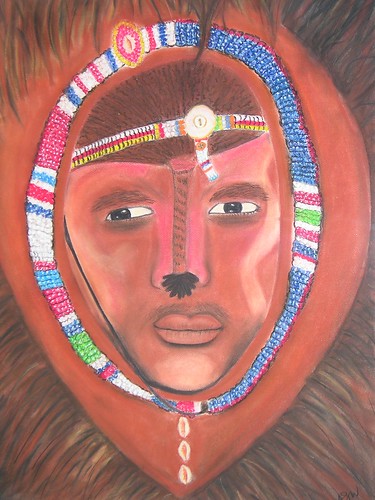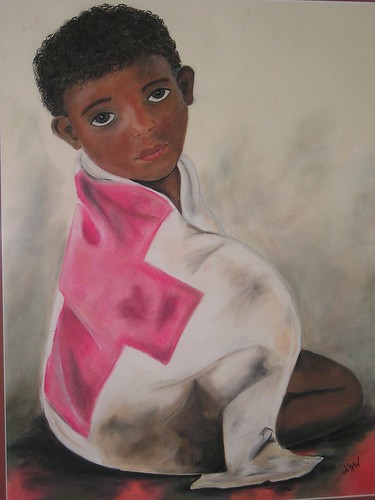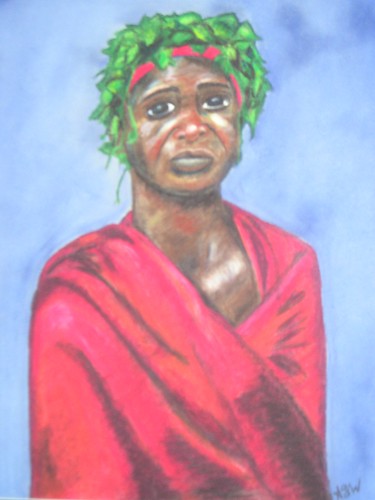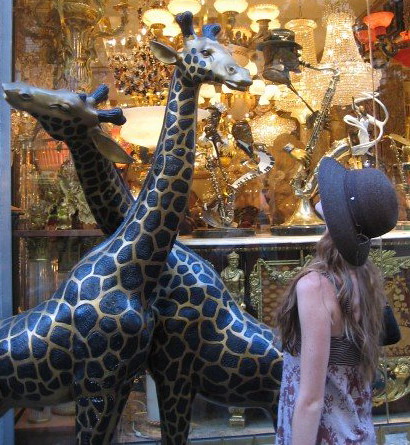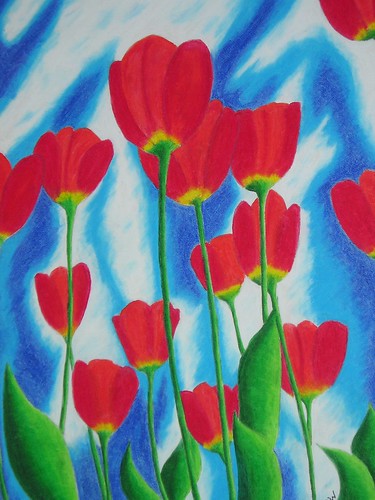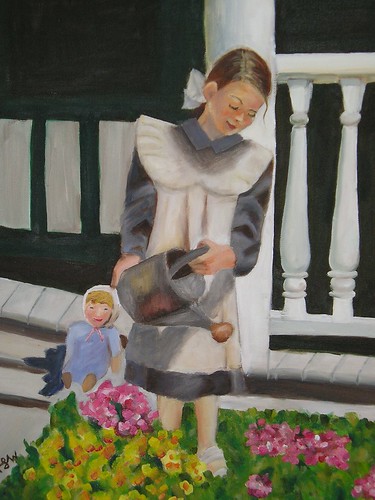It's a question I get asked all the time and a question I continue to ask myself at least 2 to 3 times a day while I am here. When the water goes out for 4 days at a time, when our team gets kicked out of a home we are trying to study, when I see a child defecate on the side of the road - The question is the same: "What the f*** am I doing here?!"
It's an impossible question with many different answers, but I will do my best to give you the simplest one...
First, a bit of background: While diarrheal disease is uncommon and easily treatable in the "developed" world, it is a common cause of death in developing countries. Diarrhea due to infection can last a few days or sometimes several weeks, Diarrhea is actually a symptom of an infection caused by bacterial, viral, or parasitic organisms (many of which are found in contaminated drinking water). Diarrhea disease is common in areas where there is a shortage of clean drinking water.
Diarrhea causes rapid depletion of both water and sodium. if the water and salts are not replaced quickly, the body becomes dehydrated. Severe diarrhea is often life threatening to infants an young children due to the amount of fluid lost. The World health Organization estimates that dehydration caused by diarrheal disease is responsible for 1.8 million deaths per year; 90% of these deaths occur among children under 5, mostly in developing countries (2004).
The research I am working on here focuses on the link between health outcomes and water quality. Many slum communities do not have access to running water most of the day. Instead, there is about a period of 4 hours when families must collect enough water to use throughout the day. Water must be collected for everything: showering, cooking, drinking, laundry, and cleaning. because water can only be collected during a set time, it must be stored all day. Past studies have shown that water coming from the tap is relatively clean and safe to drink. However, stored water is often very contaminated.
For this reason, many educational interventions focus on promoting water treatment options (boiling, filtration, chlorine, etc) and safe water storage methods (covering water, distinguishing between drinking water and water used for other things, etc). Additionally, treatment options are often expensive, time consuming, and potentially unnecessary.
This summer, our team is trying to determine at what point throughout the day water contamination occurs. We want to understand what happens to the water from the time it comes out of the tap to the time it is consumed. Once we ave a more nuanced understanding of how water is used, we may be able to design a more appropriate intervention for this particular community.
To do this, we are conducting a number of in home observations and testing the quality of the water. What does this mean? Usually it means we go into the community around 6am when the family collects water so that we can test it right when it comes out of the tap. We then spend 4 to 5 hours inside the home just observing. We watch how water is handled, what it is used for, and how it is stored. We also take a number of additional water samples throughout the day so that we can try to determine what is causing contamination and when.
Sound like an impossible challenge? It definitely feels that way at times! but, we have already learned so much and many of our previously accepted assumptions are being flipped upside down. needless to say, we are all really excited about the result and what they will mean for future health interventions.
Well, that was a snapshot of my project! And one answer to the impossible question.
Love from Mumbai
Saturday, July 10, 2010
Tuesday, June 22, 2010
Behrampada
I cannot believe that I have been in Mumbai for almost 2 weeks!! I have been incredibly busy which has made time fly by. It’s not uncommon to pull a 16-hour workday – spending 8 to 10 hours in the field and having project meetings until 2am. It’s mentally and physically exhausting, but I love it!
I’ve been working primarily in a slum in Bandra called Behrampada (“Behram” for short). It’s on 7 acres of land just east of the train station. There are approximately 10,000 shanties/ structures with a low estimate of 70,000 residents. As soon as you walk into Behram, the air changes. It smells like rotting meat and sewage. Most houses are about 10ft by 12ft. and are 4 to 5 stories high. There are usually a couple families living in each shanty building. The shanties are separated by small lanes about 3 feet across. So if someone is walking towards you, you have to stand flat against one of the houses to let them pass. Because the shanties are built up so high, there is very little sunlight, making the lanes dark and damp. The structures are built unevenly and electrical lines hang down from them so you often have to duck when walking through the lanes. All of the sewage is open – there are a series of gutters running down the lanes, in between the houses. It’s so dirty that it blends in with the wet ground/ mud. The other day, as I was walking down a particularly dark lane just after it had rained, I stepped right into one! So so soooo disgusting! I walked around with human shit on my foot all day long!
In order to get to a family at the second floor of a structure, you have to climb up a steep ladder and through a hole in the ceiling of the first floor. To get to the fourth floor you have to climb up three separate stepladders and often crawl up holes in the roofs of four other families. Behram is a pretty intimidating place to walk into as an outsider, but the more we are there, the more people seem to recognize us. For the most part, people are kind and very very curious. Once again I am learning that smiles are a universal language.
After a particularly long day of recruiting families to participate in our research study, we walked past a big plot of dirt/ field where about 30 to 40 kids were playing a game of cricket. Lost in our thoughts and conversations we walked right onto the field and into their game. They stopped playing and gathered around us with understandable curiosity. I’ve wondered about cricket since my first trip to India. The men in the Tata Chemicals compound would play at night sometimes. I always wanted to try it, but there were never any other women playing. Without thinking I asked one of the boys if I could try hitting the ball. He quickly handed me the bat and eagerly waited for me to get into position.
I was really nervous I was going to completely whiff it!! The boy that was pitching got close and threw the ball to me really softly - kind of like a father would pitch a baseball to a son who was just learning to bat. Expecting to miss, I totally hit the ball!! All of the boys were jumping up and down. I was jumping up and down. Everyone was cheering. They were all giving me high fives and wanting me to try again. Some of the families in the slum houses around the field looked out their windows. I even caught a couple people smiling at the ridiculous tall white girl playing cricket with the little boys. It almost made up for walking around with shit on my foot the day before… almost. Smile
I’ve been working primarily in a slum in Bandra called Behrampada (“Behram” for short). It’s on 7 acres of land just east of the train station. There are approximately 10,000 shanties/ structures with a low estimate of 70,000 residents. As soon as you walk into Behram, the air changes. It smells like rotting meat and sewage. Most houses are about 10ft by 12ft. and are 4 to 5 stories high. There are usually a couple families living in each shanty building. The shanties are separated by small lanes about 3 feet across. So if someone is walking towards you, you have to stand flat against one of the houses to let them pass. Because the shanties are built up so high, there is very little sunlight, making the lanes dark and damp. The structures are built unevenly and electrical lines hang down from them so you often have to duck when walking through the lanes. All of the sewage is open – there are a series of gutters running down the lanes, in between the houses. It’s so dirty that it blends in with the wet ground/ mud. The other day, as I was walking down a particularly dark lane just after it had rained, I stepped right into one! So so soooo disgusting! I walked around with human shit on my foot all day long!
In order to get to a family at the second floor of a structure, you have to climb up a steep ladder and through a hole in the ceiling of the first floor. To get to the fourth floor you have to climb up three separate stepladders and often crawl up holes in the roofs of four other families. Behram is a pretty intimidating place to walk into as an outsider, but the more we are there, the more people seem to recognize us. For the most part, people are kind and very very curious. Once again I am learning that smiles are a universal language.
After a particularly long day of recruiting families to participate in our research study, we walked past a big plot of dirt/ field where about 30 to 40 kids were playing a game of cricket. Lost in our thoughts and conversations we walked right onto the field and into their game. They stopped playing and gathered around us with understandable curiosity. I’ve wondered about cricket since my first trip to India. The men in the Tata Chemicals compound would play at night sometimes. I always wanted to try it, but there were never any other women playing. Without thinking I asked one of the boys if I could try hitting the ball. He quickly handed me the bat and eagerly waited for me to get into position.
I was really nervous I was going to completely whiff it!! The boy that was pitching got close and threw the ball to me really softly - kind of like a father would pitch a baseball to a son who was just learning to bat. Expecting to miss, I totally hit the ball!! All of the boys were jumping up and down. I was jumping up and down. Everyone was cheering. They were all giving me high fives and wanting me to try again. Some of the families in the slum houses around the field looked out their windows. I even caught a couple people smiling at the ridiculous tall white girl playing cricket with the little boys. It almost made up for walking around with shit on my foot the day before… almost. Smile
Monday, June 7, 2010
Here we go again! India: Round 3
It's about 4am in Amsterdam and I can't sleep. I'm trying to remember the sounds, the heat, and the overwhelming smells of bombay. It's been a year since I've been back to India and I am filled with nervous anticipation. It's as if i am waiting to meet with an old friend i haven't seen for some time - wondering if we will pick up just where we left off, with old stories to discuss and new memories to make.
I hope to do a better job this summer of documenting my experiences. It's difficult to describe what goes on in the city that never sleeps. It's even more difficult to paint an accurate depiction of the people I meet and the slum areas where I work. But I will do my best. Please remember however, that the images i describe and the insights i may offer are but one view of a complex, multidimensional, and ever changing society. My experiences are just a single story of a nation with a library of tales to share.
With that said, I am very excited to see what kind of mischief I will get myself into this time around.
As anxious as I am about arriving in Mumbai late tonight, I have no doubt that with a slight wiggle of the head, India will again welcome me with open arms. And with my first cup of piping hot chai, I will feel right back at home.
Love from Amsterdam
I hope to do a better job this summer of documenting my experiences. It's difficult to describe what goes on in the city that never sleeps. It's even more difficult to paint an accurate depiction of the people I meet and the slum areas where I work. But I will do my best. Please remember however, that the images i describe and the insights i may offer are but one view of a complex, multidimensional, and ever changing society. My experiences are just a single story of a nation with a library of tales to share.
With that said, I am very excited to see what kind of mischief I will get myself into this time around.
As anxious as I am about arriving in Mumbai late tonight, I have no doubt that with a slight wiggle of the head, India will again welcome me with open arms. And with my first cup of piping hot chai, I will feel right back at home.
Love from Amsterdam
Subscribe to:
Posts (Atom)
